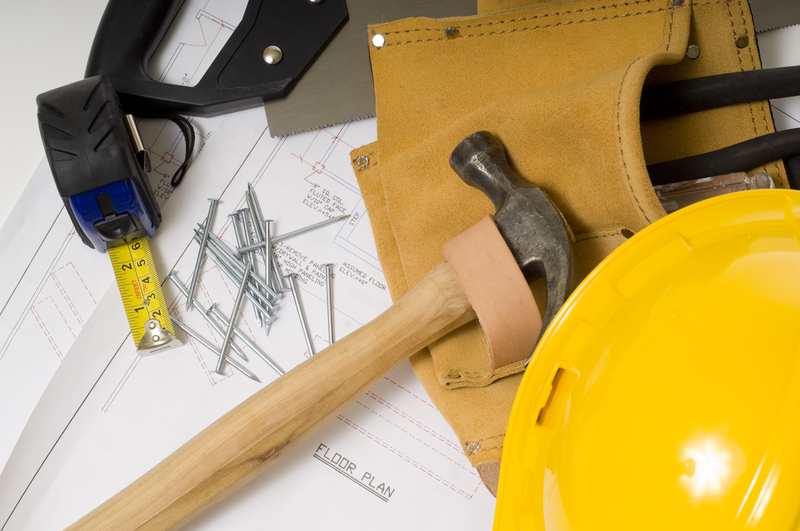The Real Divide in America: Those Who Can-Do and Those Who Can’t

There are two human animals in America — those clever enough to use tools to do useful things, and those bonobos who can't. Tweet

Highlights
During the pandemic, I renovated a bathroom, rebuilt our sprinkler system, installed a through-the-wall air-conditioning unit...
At Home Depot, perfect strangers debate the pros and cons of various projects in a dozen languages
I find it easier to relate to someone who has worked with his hands than some show biz jackass who tells you within five minutes he went to Harvard
If there’s one universal worry among the folks who do things themselves, it’s that our kids don’t know how to do anything
I sometimes joke that a trip to my local Home Depot is a show unto itself.
The store is on Sunset Boulevard in Hollywood, just down the block from Netflix’ headquarters, and on any given weekend, the cast of characters includes not just contractors of every L.A. ethnicity in pick-up trucks and white panel vans, but also young actresses, drag queens, independent film crews, and virtually every color on the LGBTQ rainbow.
If you send out the right signals, you can always find someone to go home with.
Then there’s me.
During the pandemic, I renovated a bathroom, rebuilt our sprinkler system, installed a through-the-wall air-conditioning unit, restored an 80 year-old redwood fence, planted a new rose garden, set up a mesh wi-fi network, and repaired more leaky showers and faucets than I’d care to admit.
As the months rolled by, prowling through the aisles of Home Depot, I realized how frequently I’d get asked for advice by other Can Do-ers, and in turn, how often the questions went the other way: perfect strangers debating the pros and cons of various Wi-Fi thermostats or the best paint sheen for a kid’s bedroom. And something occurred to me, not just about home repair, but the state of our current affairs in America:
Maybe the real divide among Americans – and American men in particular – isn’t rooted in politics, or geography, or race, or income, but in the ability to Do Things. To fix things.
Maybe the real divide among Americans – and American men in particular – isn’t rooted in politics, or geography, or race, or income, but in the ability to Do Things. To fix things. To pick up a tool, work with your hands, and get stuff done. Because whether we’re communicating in Spanish, English, Korean, Armenian or Mandarin, the people who can Do Things speak the same language, and have no problem finding common ground.
♠
Working as a journalist in New York, and then as a screenwriter in Los Angeles, I used to be surprised at the way most of my friends and colleagues reacted when they learned I could use tools. “Really? You’re handy?” they’d ask, usually with a combination of shock and disbelief — but every so often with a distinct undertone of disdain, as if I’d dropped to my knees, pulled out a nail gun, and threatened to re-shingle the house.
There was, in this, a mix of defensiveness and class superiority. It is why, to this day, I find it easier to relate to someone who has worked with his hands than some show business jackass who insists on letting me know within five minutes of meeting that he went to Harvard.
♠
As a child in suburban New Jersey during the 1960’s, I grew up taking apart telephones and television sets. I wanted to see what was inside. When I was in junior high, I took the mandatory “shop” class, where I learned how to cut wood and solder. Back then, not everyone was expected to go to college, and these were considered essential manly life skills. In high school I played bass guitar in a band, learning to fix microphone chords and troubleshoot pre-transistor tube-based amplifiers, along with putting new stereo systems and speakers in the family cars. And the summer before college, I talked my way into a maintenance job at Newark Airport, cutting the grass and changing the light bulbs on the runways.
It’s not that I was relentlessly ambitious. And none of this grew out of any family heritage. My grandfather owned a tavern in Newark; my father was a textile salesman in New York City. The truth was I needed the money. Especially for college tuition.
The one job that taught me most about fixing things – and maybe adulthood itself – was the construction crew I joined during my first years at Boston University, working weekends and summers rehabbing tenements and triple-decker apartment buildings on Blue Hill Avenue in Dorchester. Some of the three story buildings were trashed; others were burnt out. We used to joke that the neighborhood was so tough that you needed to yell out “Cover me! I’m making a break for lunch.” But over the course of two years, working with a dozen guys whose middle initials were “FX” (William Francis Xavier McGuire, Michael Francis Xavier O’Connor, Seamus Francis Xavier O’malay, et al,) I learned to refinish floors, put up sheetrock, patch plaster, put in a kitchen, install a new bathroom, hang wall paper, flame tar a roof, upgrade electric service and slather bucket-loads of “Benny Moore” paint on anything that wasn’t moving.
The work was hard. And sometimes hilarious: I swore I was going to name my first children Bondo (after the versatile putty) and Tyvek (after the house-wrap.) But at the end of the day it gave me a rich sense of accomplishment, and it forever changed the way I look at the world and treat people.
If there’s one universal worry among the folks who do things themselves, it’s that our kids don’t know how to do anything. In today’s world, there are no shop classes, nobody takes a working iPhone apart for fun, and at best, Photoshop, Minecraft and computer-coding have replaced tinkering around the house with hardware and tools.
How do you encourage kids to be confident, and self-assured, and self-reliant?
As my now-college age children would surely attest, I made my share of mistakes bringing them up. But I put a cordless screw drill in my daughter’s hands when she was seven, to help build a tiny desk for a corner of the office where I write. And, likewise, at the same time, taught her twin brother how to use an orbital sander to finish off a wooden sword we’d built.
A decade later, I was beaming with pride then when my daughter announced that she’d gone on Google to figure out why there was a puddle of water in the passenger footwell of one of our cars, and followed the instructions on a YouTube video to fix it – popping open the hood, and pulling out some dead leaves clogging a badly designed drain system between the hood and the windshield.
And again, likewise, I had to stifle a smile when my son showed up at his college dorm room, looked at all the furniture and shelves that needed to be put together, pulled out his own Leatherman multi-tool, and said “No problem. I got this.”
Above all else, we don’t want our kids to be helpless. We don’t want them to be incapable of fixing things. We want them to be able to take care of themselves, the places they live, the people around them.
♠
Somewhere in America right now, there’s a faucet that’s dripping, a room that needs to be painted, and a sink waiting to be unclogged.
There’s also a school board that needs fixing, a neighborhood that needs to be rebuilt, and a city council in dire need of repair.
Somehow, one way or another, in the great spirit of Americans who can Do Things, I have faith that we can, and we will, fix this too.




